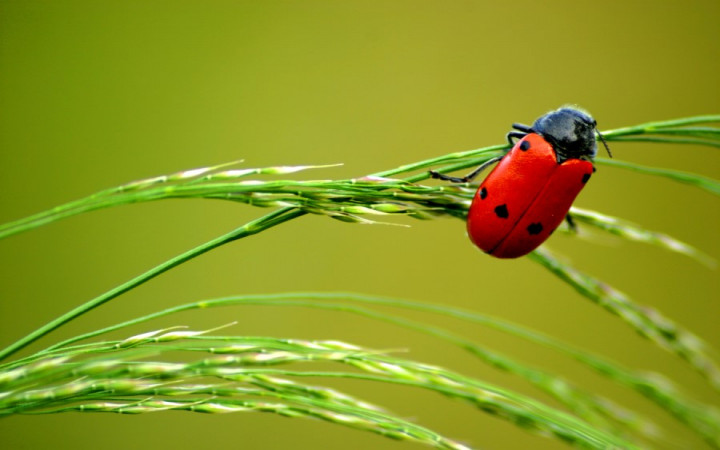
Demystifying the Spotless: What Lies Beneath a Ladybug’s Missing Markings?
Ladybugs, with their vibrant red shells adorned with black spots, are beloved insects that have captured hearts and imaginations for centuries. Their distinctive markings have even woven themselves into folklore, with the number of spots traditionally believed to hold prophetic significance. However, encountering a ladybug devoid of these characteristic spots can leave some bewildered. Does the absence of these colorful polka dots signify something more than mere biological variation? This article dives deeper into the fascinating world of ladybugs, unveiling the scientific reasons behind the lack of spots in certain species and dispelling the myths that have swirled around these intriguing insects.
Beyond the Dots: Unveiling Ladybug Diversity
Ladybugs, also known as lady beetles, belong to the extensive family Coccinellidae. This taxonomic group boasts over 6,000 species, each with a unique set of characteristics. While the classic red with black spots is the most recognizable image, the ladybug world explodes with a kaleidoscope of colors and patterns. Some species sport two spots, while others are adorned with a multitude, arranged in intricate designs. Intriguingly, a fascinating phenomenon known as melanism can disrupt this colorful display, resulting in ladybugs with a complete absence of spots.
Spotless Secrets: Decoding the Science Behind Missing Markings
The vibrant spots adorning a ladybug’s elytra (wings) are not merely cosmetic; they are the product of complex genetic interactions. Genes dictate the production of pigments like melanin, which is responsible for the dark spots contrasting with the red base color. Variations in these genes and their expression can lead to a spectrum of spot patterns, from the reduction of spots to their complete disappearance.
Melanism, the genetic mutation causing the absence of spots, can offer ladybugs a surprising evolutionary advantage in certain environments. In some cases, dark coloration can provide better camouflage, allowing these spotless ladybugs to blend in with their surroundings and evade predators. Additionally, melanin may offer protection from the harmful effects of ultraviolet radiation in high-altitude habitats. The degree of melanism can also vary within a species, with some ladybugs exhibiting partial spot reduction, while others appear entirely devoid of these markings.
Farewell Folklore: Dispelling Myths Surrounding Spotless Ladybugs
Folklore often associates the number of spots on a ladybug with luck in love or fortune. However, these charming beliefs lack a scientific basis. The presence or absence of spots is simply a product of a ladybug’s unique biology. A spotless ladybug is not a harbinger of bad luck or the absence of love; it is simply a fascinating example of natural variation. By appreciating ladybugs for their ecological role as beneficial predators, we can move beyond superstition and celebrate the remarkable diversity within this insect family.
In the scientific community, ladybug spot patterns are a subject of ongoing research. Entomologists (insect scientists) are exploring the link between geographical variations and spot configurations. For instance, some studies suggest that ladybugs in cooler regions tend to have fewer spots, potentially due to the thermoregulatory properties of melanin. Additionally, the vibrant coloration of spotted ladybugs might serve as aposematic warning coloration, alerting predators to their distasteful nature. Spotless ladybugs, however, might utilize alternative defense mechanisms, an area ripe for further exploration.
By appreciating the science behind both the classic spotted ladybug and its spotless counterparts, we gain a deeper appreciation for the remarkable adaptability and resilience of these beneficial insects. So next time you encounter a ladybug, regardless of its spot pattern, remember the fascinating story written in its genes – a testament to the power of evolution and the intricate balance of our natural world.
In conclusion, the lack of spots on certain ladybugs is a result of melanism, a genetic mutation with potential evolutionary benefits. Understanding the science behind these spotless wonders allows us to appreciate ladybugs beyond the realm of folklore. Regardless of their spot pattern, all ladybugs play a vital role in our ecosystems, preying on garden pests and maintaining a natural balance. So, the next time you encounter a ladybug, take a moment to admire its beauty, spotted or spotless, and appreciate its contribution to the intricate web of life.






